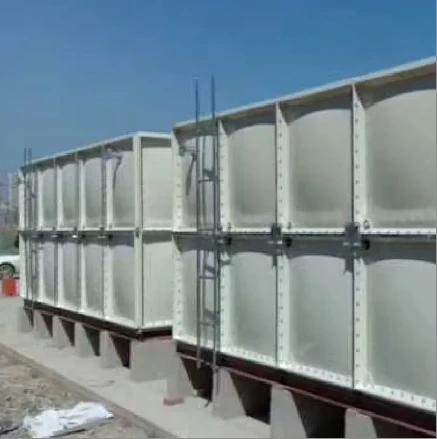loading...
- No. 9, Xingyuan South Street, Dongwaihuan Road, Zaoqiang County, Hengshui, Hebei, China
- admin@zjcomposites.com
- +86 15097380338
- Welcome to visit our website!
frp pressure vessel tank
Understanding FRP Pressure Vessel Tanks
Fiber-Reinforced Polymer (FRP) pressure vessel tanks have gained significant traction in various industries due to their unique properties, robustness, and versatility. These tanks are primarily used to store various fluids under pressure, and their design caters to the requirements of both chemical storage and containment for industrial applications.
Composition and Characteristics
FRP tanks are made from a combination of polymer resin and reinforcing fibers, which generally consist of glass fibers, carbon fibers, or aramid fibers. This combination results in a lightweight, durable, and strong material capable of withstanding high pressures and corrosive substances. The inherent resistance of FRP to corrosive chemicals makes these tanks particularly advantageous for the chemical processing industry, where they often replace traditional metallic tanks, which are susceptible to rust and degradation.
One of the most notable characteristics of FRP pressure vessel tanks is their low density compared to metals. This not only makes them easier to handle and transport but also allows for the design of larger storage capacities without substantially increasing the weight of the overall system. FRP tanks can be manufactured in various shapes and sizes, which adds to their versatility in different applications.
Design and Engineering Considerations
The design of FRP pressure vessels must adhere to stringent engineering codes and standards, such as the ASME Section X, which provides guidelines for pressure vessels. These standards ensure that the tanks can safely withstand the internal pressures they are subjected to, as well as external environmental factors. Engineers use advanced simulation and modeling techniques during the design phase to predict the behavior of the tank under various operating conditions.
Moreover, the fabrication process of FRP tanks involves processes like filament winding, hand lay-up, and pultrusion. Filament winding, for instance, allows for precise control over the direction of the reinforcement fibers, resulting in enhanced strength in the areas where it is needed most. This gives FRP tanks a tailored structure that can be optimized for specific applications.
frp pressure vessel tank

Applications of FRP Pressure Vessels
The applications of FRP pressure vessel tanks are diverse and cover various sectors, including
1. Chemical Industry Storage of aggressive chemicals, such as acids and alkalis, where metal tanks would corrode. 2. Water Treatment Able to store treated water and other fluids safely while minimizing biofouling. 3. Oil and Gas Used for offshore applications and pipeline systems where weight and corrosion resistance are critical. 4. Pharmaceuticals Ensuring the safe storage of sensitive materials without contamination.
The flexibility in manufacturing also allows for customization, enabling industries to adopt tailored solutions that fit their specific needs.
Advantages and Future Prospects
The advantages of FRP pressure vessel tanks extend beyond their physical attributes. Their ability to reduce maintenance costs, coupled with low life-cycle management requirements, positions them as a sustainable solution. As environmental concerns rise, the demand for cost-effective, lightweight, and reliable storage solutions is likely to drive further innovation in FRP technology.
In conclusion, FRP pressure vessel tanks represent a pivotal development in the storage and handling of pressurized fluids. Their unique properties make them suitable for a wide range of applications, thereby establishing them as a reliable alternative to traditional storage solutions. As technology evolves, FRP tanks are expected to play an even more significant role in advancing industrial processes across various fields.
-
Transform Your Spaces with FRP Grating SolutionsNewsNov.04,2024
-
The Versatility and Strength of FRP RodsNewsNov.04,2024
-
The Excellence of Fiberglass Water TanksNewsNov.04,2024
-
The Benefits of FRP Grating for Your ProjectsNewsNov.04,2024
-
Elevate Your Efficiency with FRP Pressure VesselsNewsNov.04,2024
-
Welcome to the World of FRP Pressure VesselsNewsOct.12,2024
-
Unveiling the Future of Filtration: Why FRP Filter Vessels are a Game ChangerNewsOct.12,2024
